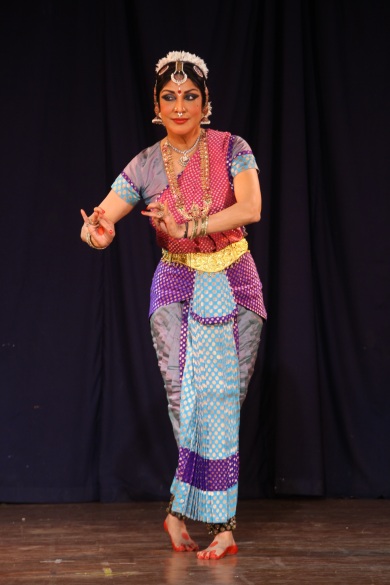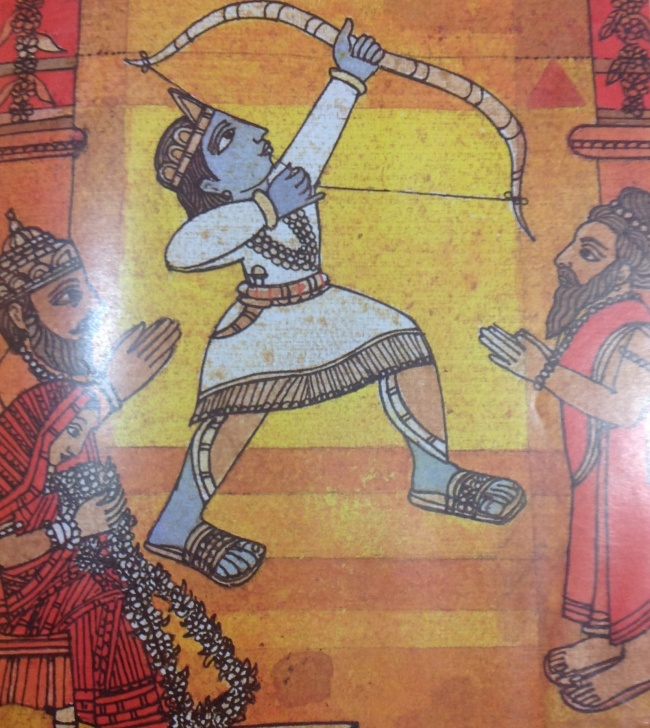September 27, 2013 at the Bangalore Gayana Samaja at 6:30 pm
Diksha – a tribute to Muthuswamy Dikshitar
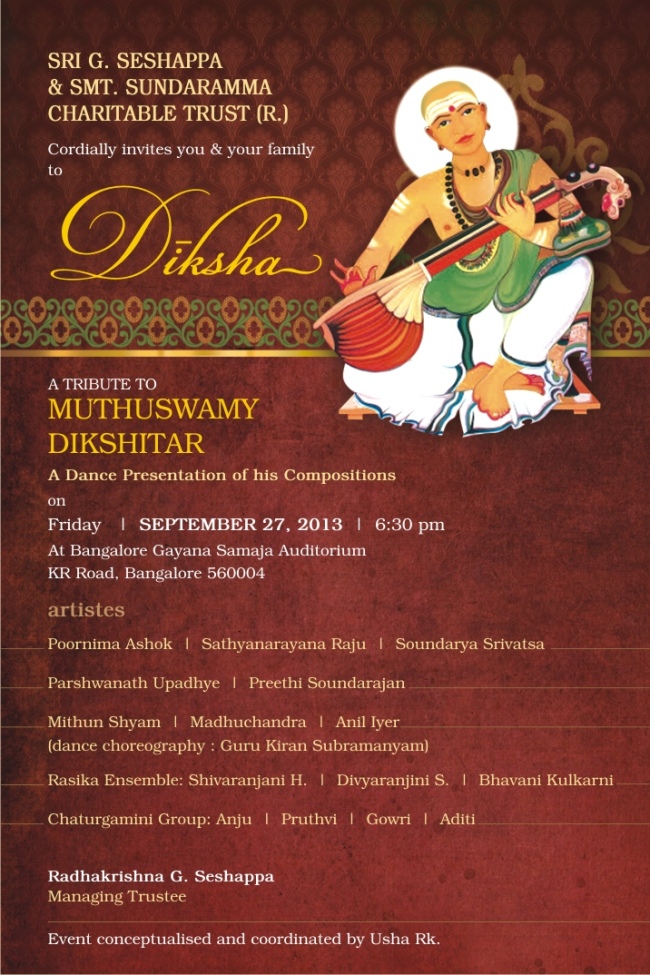
It gives us great pleasure to announce the annual programme of the Sri. G. Seshappa & Smt. Sundaramma Charitable Trust ® for the year 2013. The theme for this year is compositions of the great Saint poet and one of the intrinsic composers of the Musical Trinity “MUTHUSWAMY DIKSHITAR”. DIKSHA – a tribute to Muthuswamy Dikshitar will feature some of his popular and celebrated kritis like: Akhilandeshwari, Kanchadalayadakshi, Srirangapura Vihara, Sadachaleshwaram, a very special composition which includes 14 ragas – Chaturdasha Bhuvana Roopa Raga Maalika – “Sri Viswanatham Bhajeham”, Shakti Sahitha Ganapathim composed using the ‘Western Notes’ or ‘Nottuswaram’ in raagam Shankarabharanam etc.
The dancers for the evening’s presentation include some of the well-known and senior performers like Poornima Ashok, Sathyanarayana Raju, Soundarya Srivatsa, young performers like Parshwanath Upadhye, Preethi Sundarajan, Mithun Shyam, Anil Iyer and Madhuchandra, Rasika Ensemble: Shivaranjani, Divyaranjini, Bhavani Kulkarni and Chaturgamini Group: Anju Nair, Pruthvi Sharma, Gowri Shankar, Aditi Sadashiva.
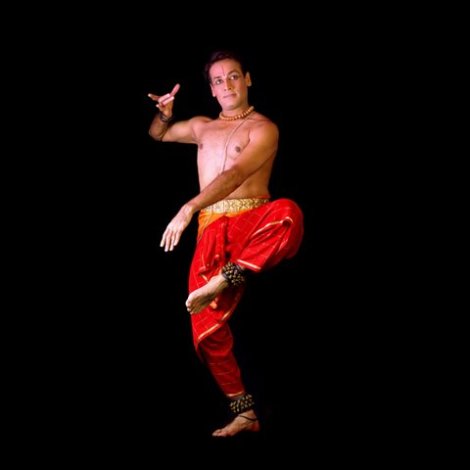
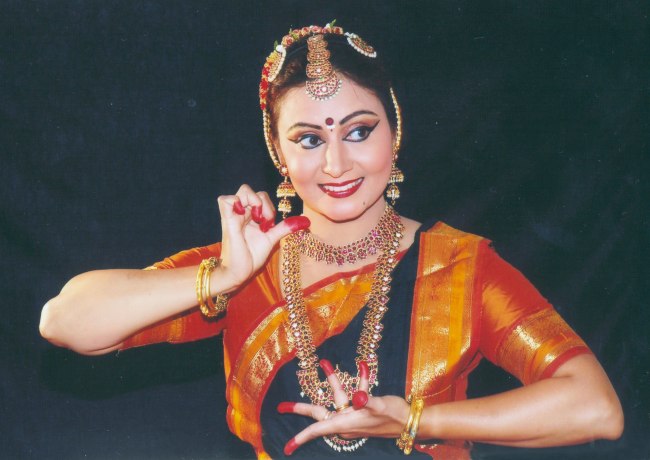
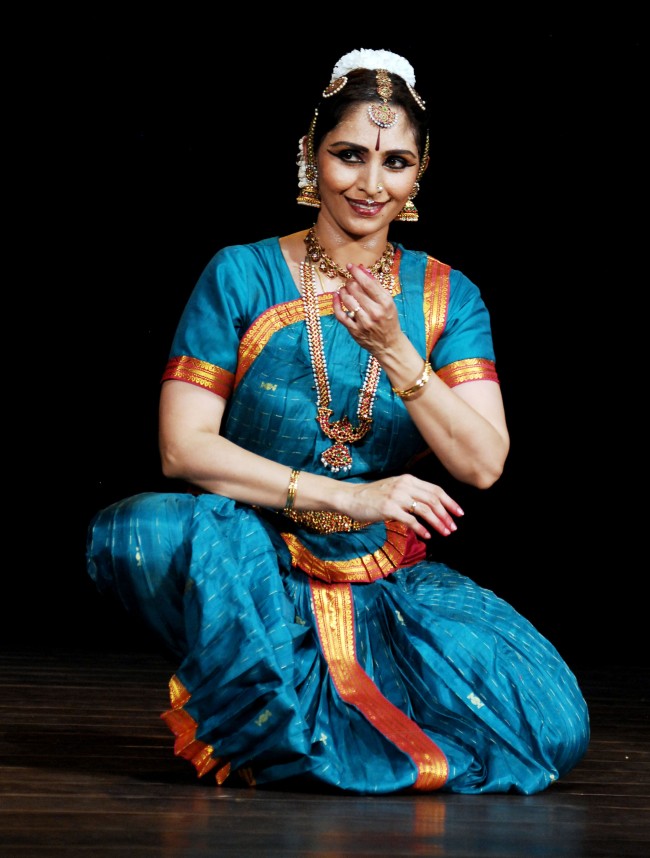
The compositions for the male dancers Mithun Shyam, Anil Iyer and Madhuchandra and the Rasika Ensemble are choreographed by Bangalore’s most respected Guru Kiran Subrahmanyam. The rest of the dancers have choreographed their own numbers. The event will be held on Friday, 27th September 2013 at 6:30 pm at the Bangalore Gayana Samaja Auditorium, KR Road, Bangalore 560 004.
Muthuswamy Dikshitar:
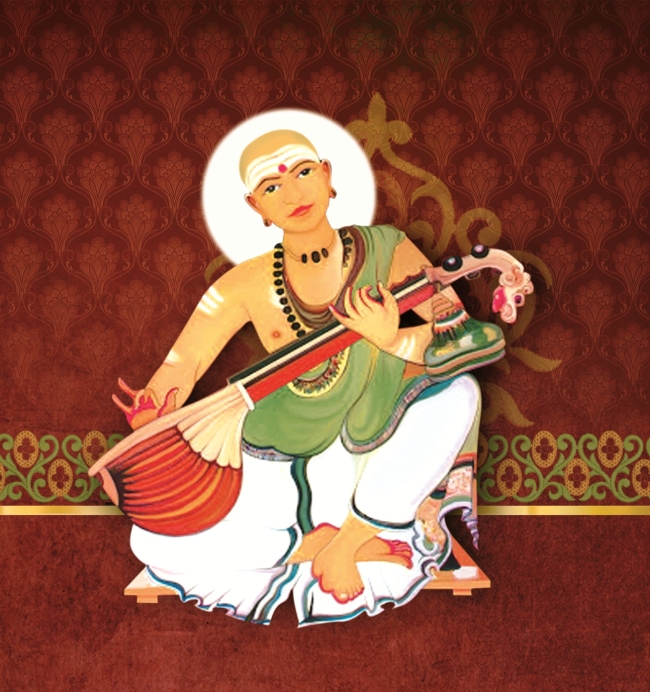
Muthuswami Dikshitar ,(March 24, 1775 – October 21, 1835)
is a South Indian poet and composer and is one of the Musical Trinity of Carnatic music. His compositions, of which around 500 are commonly known, are noted for their contemplative nature and for capturing the essence of the raga forms through the vainika (veena) style that emphasises gamakas. They are typically in a slower speed (chowka kala). He is also known by his signature name of Guruguha. His compositions are widely sung and played in classical concerts of Carnatic music.
The musical trinity consists of Dikshitar, Thyagaraja (1767–1847), and Syama Sastri (1762–1827) although, unlike the Telugu compositions of the others, his compositions are predominantly in Sanskrit. He also had composed some of his Kritis in Manipravalam.
Muthuswami Dikshitar was born in Thiruvarur (of Thiruvarur district in what is now the state of Tamil Nadu) to a Tamil Iyer Brahmin couple Ramaswami Dikshitar and Subbamma, as the eldest son. According to the account of Subbarama Dikshitar, Muttuswami Dikshitar was born in the Manmatha year, in the month of Tamil Panguni (Chaitra Maasa) under the asterism-nakshatra Krittikaa. He was named after the temple deity, Muttukumaraswamy; legend has it that he was born after his parents prayed for a child in the Vaitheeswaran Temple. He had two younger brothers Baluswami, Chinnaswami and a sister Balambal.
In keeping with the Brahminic educational tradition, Muthuswami learnt the Sanskrit language,Vedas, and other important religious texts. He obtained his preliminary musical education from his father.
While he was still in his teens, his father sent him on a pilgrimage with a wandering monk named Chidambaranatha Yogi to gain musical and philosophical knowledge. Over the course of this pilgrimage, he visited many places in North India and acquired a broad outlook that is reflected in many of his compositions. During their stay in Kashi (Varanasi), his guru Chidambaranatha Yogi, presented Dikshitar with a unique Veena and died shortly thereafter. The samādhi of Chidambaranatha Yogi can still be seen in Sri Chakra Lingeshwar temple at the Hanuman Ghat area in Varanasi.
According to legend, his guru asked Muthuswami to visit Thiruttani (a temple town near Chennai). There, while he was immersed in deep meditation, an old man appeared and asked him to open his mouth. He dropped sugar candy into his mouth and disappeared. As he opened his mouth, he had a vision of the deity Muruga and Dikshitar burst forth into his first composition “Shri Nathadi Guruguho” in the raga Mayamalavagowla.
This song addressed the Lord (and/or the guru) in the first declension in Sanskrit. Dikshitar later composed kritis in all the eight declensions on the Lord. These are mostly with epithets (descriptive terms) glorifying the guru and have very few references to Lord Muruga or specifically to the deity in the Saguna form, as at Thiruthani.
He then went on a pilgrimage visiting and composing at the temples at Kanchi, Tiruvannamalai,Chidambaram, Tirupathi and
Kalahasthi, before returning to Thiruvarur.
Muthuswami Dikshitar attained mastery over the Veena, and the influence of Veena playing is evident in his compositions, particularly the gamakas. In his kriti Balagopala, he introduces himself as a vaiNika gAyaka, “a player of the veeNA”. He experimented with the violin, and among his disciples, Vadivelu of the Thanjavur Quartet, and his brother Baluswami Dikshitar pioneered the use of violin in Carnatic music, now an integral part of most Carnatic ensembles.
On his return to Thiruvarur, he composed on every deity in the Thiruvarur temple complex including Thyagaraja (an amsha of Lord Shiva), the presiding deity, Nilotpalambal, His consort, and the Goddess Kamalambal an independent deity of high tantric significance in the same temple complex. This is when he composed the famous Kamalamba Navavarana cycle, filled with exemplary sahityas which proved to be the showcase of his compositions. These navavaranams were in all the eight declensions of the Sanskrit language and are sung as a highlight of Guruguha Jayanti celebrated every year. He continued to display his prowess by composing the Navagraha Kritis in praise of the nine planets. The sahitya of the songs reflect a profound knowledge of the Mantra and Jyotisha shastras. The Nilotpalamba Kritis is another classic set of compositions which revived dying ragas like Narayanagaula, Purvagaula, and Chayagaula
Muttuswami Dikshitar was approached by four dance masters from Thanjavur: Sivanandam, Ponnayya, Chinnayya and Vadivelu. They expressed their desire to learn music from him and entreated him to accompany them to Thanjavur. There, Dikshitar imparted to them the 72 mela tradition handed down by Venkata Vaidyanatha Dikshitar. The students showed their gratitude by composing a set of nine songs called Navaratna Mala glorifying their guru. These four disciples became what is known as the Tanjore Quartette and are revered as the prime composers of music for Bharata Natyam. Among his students, Ponnayya (Also called Ponnayya Pillai) and Chinnayya (Also called Chinnayya Pillai) also served as court artists of Sri Swati Tirunal of Thiruvananthapuram (Trivandram – Kerala). Sri Ponnayya served as the principal of Annamalai University as well and trained many students in music there.
At a young age, Dikshitar was also exposed to the music of the Western bands at Fort St. George. At a later stage, Dikshitar composed some forty songs to several (mostly western folk) tunes loosely adapted to ragas such as ShankarabharaNa. This corpus is now known as nottusvara sAhitya (etym. nottusvara = “notes” swara). The influence of Celtic and Baroque styles in these compositions is quite evident (e.g., Sakthi Sahitha Ganapatim, to the tune of voulez-vous dancer, Varashiva Balam). There is an erroneous belief that these were composed at the behest of CP Brown, the Collector of Cuddapah. This is not possible as the two could have never met. Muttuswami Diskhitar had left Madras by 1799. Brown came to Madras only in 1817, learnt Telugu in 1820 and moved over to Cuddapah the same year.
On Deepavali day, in 1835, Dikshithar performed puja as usual and asked his students to sing the song “Meenakshi Me Mudam” in the raga purvikalyani.
As his students sang the lines “Meena lochani pasha mochani” he raised his hands and saying “Shive Pahi” and left his mortal coil.
His Samadhi is at Ettayapuram ( Mahakavi Bharathi’s Birth Place), between Koilpatti (14 km) and Tuticorin.
Muthuswami Dikshitar died on 21 October 1835. Dikshitar had a daughter but it was the descendants of his brother Baluswami who have preserved his musical legacy, and his compositions have been popularized due to the efforts of people like Subbarama Dikshitar and Ambi Dikshitar.
Baluswami Dikshitar, the sixth descendant in the line, a well-known vainika by his own right, resided in Trichy and then moved to Chennai in 1957. He died in November 1985. He has two sons and two daughters. The eldest son, Muthuswamy, the seventh descendent in the line, retired as a top executive in the State Bank of India group of banks and then was the Managing Director and CEO of a private sector bank. The younger son runs his own small-scale industry near Madurai. Both daughters are married and well settled in Chennai.
The Raja Rajeswari, Vallabha Ganapathi, Sree Chakra, Banalingam, Saligramam and other idols, given to Shri Muthuswamy Dikshithar by his guru Chidambaranatha Yogi is in the family with the eldest son Muthuswamy along with the veena (with the upturned Yaali Mukha) with the Sanskrit inscription “Sri Ram” said to have been given to Dikshitar by Goddess Sarasvati, when he bathed in the river Ganges, as indication of his having attained Mantra Siddhi.
His total compositions are about 450 to 500, most of which are very widely sung by musicians today in Carnatic music concerts. Most of his compositions are in Sanskrit and in the Krithi form, i.e., poetry set to music. Muthuswami Dikshitar traveled to many holy shrines throughout his life, and composed krithis on the deities and temples he visited. Dikshitar is considered to have composed on the widest range of deities for any composer
Each of his compositions is unique and brilliantly crafted. The compositions are known for the depth and soulfulness of the melody — his visions of some of the ragas are still the final word on their structure. His Sanskrit lyrics are in praise of the temple deity, but Muthuswami introduces the Advaita thought seamlessly into his songs, resolving the inherent relationship between Advaita philosophy and polytheistic worship. His songs also contain much information about the history of the temple, and its background, thus preserving many customs followed in these old shrines.
Muttuswami also undertook the project of composing in all the 72 Melakartha ragas, (in his Asampurna Mela scheme) thereby providing a musical example for many rare and lost ragas. Also, he was the pioneer in composing samashti charanam krithis (songs in which the main stanza or pallavi is followed by only one stanza, unlike the conventional two). Dikshitar was a master of tala and is the only composer to have kritis in all the seven basic talas Sapta Suladi Talas of the Carnatic scheme. Dikshitar shows his skill in Sanskrit by composing in all the eight declensions.
For richness of raga bhava, sublimity of their philosophic contents and for the grandeur of the sahitya, the songs of Dikshitar stand unsurpassed.
